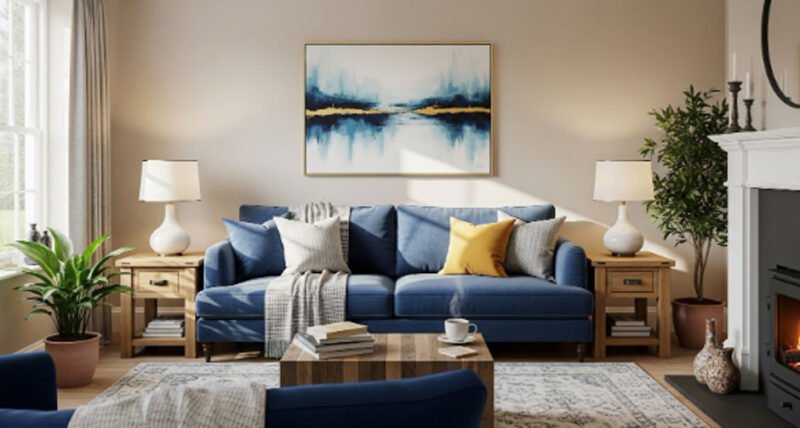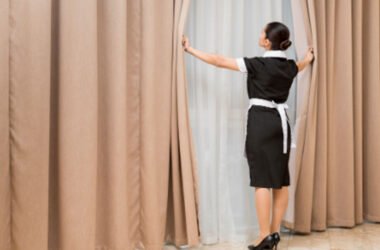For those who find calm in cerulean and joy in cobalt, the living room becomes more than a space, it transforms into an expression of identity. Blue, in its boundless spectrum, offers a unique design opportunity. It can whisper with the softness of a morning sky or command attention with the depth of the midnight sea. Building a room around this beloved hue isn’t about monochromatic obsession; it’s a creative exercise in layering tone, texture, and light to craft an environment that feels both deeply personal and effortlessly composed.
Choosing Your Central Anchor
Every great design starts with a foundation piece. This key item establishes your specific shade and sets the room’s overall tone. Will you choose the serene, airy quality of a powder blue, or make a bold statement with a rich navy? A large furniture item often serves this role perfectly. Introducing a blue sofa bed accomplishes two goals at once: it provides a dominant splash of your preferred color while offering practical versatility for hosting guests. This piece becomes your north star, guiding all subsequent selections.
Building a Supportive Palette
A room painted entirely in a single color can feel overwhelming. The magic happens when you introduce supporting actors. Neutral companions like warm greige walls, creamy off-white trim, or light oak flooring prevent the space from feeling cold. For added sophistication, consider metallic accents. Brushed brass lamp bases, gold picture frames, or a nickel floor lamp provide shimmering contrast against the cool, matte depths of your primary hue, creating a balanced and layered visual interest.
Introducing Pattern and Print
Solid color, while powerful, benefits greatly from broken repetition. Textiles offer the perfect medium for this. Select throw pillows featuring geometric designs or botanical prints that incorporate your central blue alongside complementary colors like taupe, charcoal, or soft mustard. A large area rug with a subtle pattern can tie the entire seating arrangement together, adding complexity underfoot. Drapery in a textured fabric, such as a linen blend, introduces a soft, flowing element that balances more structured furniture pieces.
Playing with Texture and Dimension
Color is only one component of visual weight. Surface interest matters just as much. Combine different materials to keep the eye engaged. A velvet pillow resting on a nubby wool throw creates a delightful tactile contrast. A sleek, glass-topped coffee table reflects light and feels airy next to the substantial fabric of your main seating. Consider a side table made of natural rattan or a bookshelf filled with a mix of book bindings and ceramic objects. These varied surfaces prevent a flat, one-dimensional appearance.
Curating Your Accent Pieces
Beyond the large furnishings and soft goods, personal artifacts complete the narrative. A collection of cobalt glass vases displayed on a mantle catches the light beautifully. Artwork featuring oceanic scenes or abstract compositions in sapphire and indigo reinforces the theme without being overly literal. Even a stack of books with blue spines on your coffee table can feel like a deliberate design choice. These are the details that signal a genuine affinity, not just a passing trend.
Lighting for Mood and Atmosphere
How blue appears changes dramatically throughout the day. Maximize natural light with sheer curtains to keep the feeling bright and airy. As evening falls, your artificial lighting scheme takes over. Avoid a single harsh overhead light. Instead, use a combination of floor lamps for ambient glow, a focused reading light next to your favorite chair, and perhaps a small, sculptural table lamp on a console. Dimmable switches allow you to adjust the mood, making a navy wall feel cozy rather than cavernous.
Embracing the Full Spectrum
Ultimately, designing with a beloved color is an act of confidence. It’s about understanding that a single hue contains multitudes—from the palest ice to the deepest marine. By anchoring your space with a signature piece, then thoughtfully building out your palette with neutrals, patterns, and textures, you create a room that feels curated, cohesive, and authentically yours. This approach transforms a simple color preference into a sophisticated, living environment.









